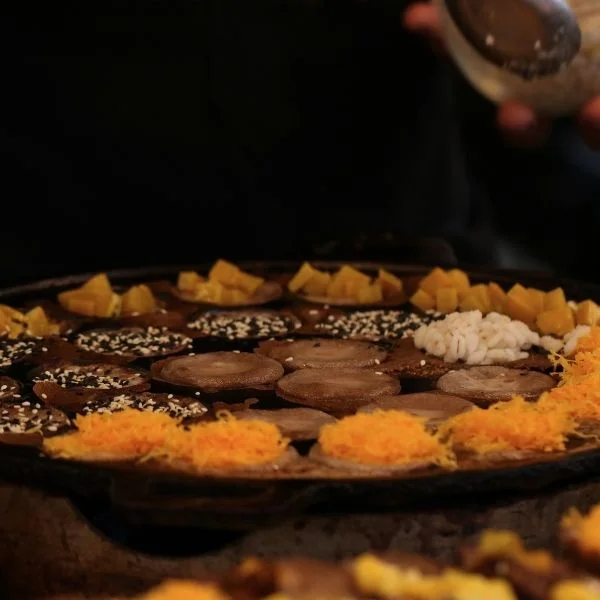Serabi cake is a popular Indonesian dessert that has been enjoyed by generations. This sweet treat is a pancake-like dish made from rice flour and coconut milk, and it is typically served with a sweet sauce or syrup made from palm sugar or coconut sugar.

1. The Origins of Serabi Cake
The exact origins of serabi cake are unclear, but it is believed to have originated in Java, Indonesia, where it is still commonly found today. Serabi cake is also similar to other types of Asian pancakes, such as Japanese dorayaki and Chinese jianbing.
2. Traditional Preparation of Serabi Cake
Serabi cake is traditionally made by mixing rice flour, coconut milk, salt, and sugar together to create a batter. The batter is then poured into a small, shallow frying pan or skillet and cooked over low heat until the pancake is lightly browned and crispy around the edges. It is typically served hot with a sweet sauce made from palm sugar or coconut sugar.
3. Variations of Serabi Cake
While the traditional recipe for serabi cake remains popular, there are many variations of this classic dessert. Some people add pandan leaves to the batter to give it a fragrant, floral flavor, while others use different types of flour, such as wheat flour or cassava flour. Some variations also include toppings such as sliced bananas or grated cheese.
4. Serabi Cake Today
Today, serabi cake is enjoyed throughout Indonesia and has become a popular dessert in many other countries as well. In addition to traditional street vendors, serabi cake can also be found in many restaurants and cafes, and it is often served at special occasions such as weddings and festivals.
5. Nutritional Information
Serabi cake is a high-carbohydrate food that is rich in calories and fat due to its coconut milk content. However, it also contains important nutrients such as protein, fiber, and iron.
FAQs
Traditional serabi cake is gluten-free, as it is made with rice flour. However, some variations may include wheat flour, so it is important to check the ingredients if you have a gluten allergy or intolerance.
Serabi cake can be frozen for later consumption, but it is best to freeze it before adding any toppings or sauces. To reheat, simply thaw the pancakes and heat them up in a frying pan or microwave.
Serabi cake is traditionally served hot with a sweet sauce made from palm sugar or coconut sugar. However, it can also be served with other toppings such as sliced bananas or grated cheese.
The number of calories in a serving of serabi cake can vary depending on the recipe and the size of the pancake. However, on average, one serving of serabi cake contains around 200-300 calories.
Traditional serabi cake is vegan, as it is made with rice flour and coconut milk. However, some variations may include other animal products such as eggs or butter, so it is important to check the ingredients before consuming if you are following a strict vegan diet.
Conclusion
Serabi cake is a delicious and unique dessert with a rich history and cultural significance in Indonesia. Whether you prefer the traditional recipe or one of the many variations, there is no denying the appeal of this sweet treat. So the next time you are in Indonesia or looking for a unique dessert to try, be sure to give serabi cake a try!
